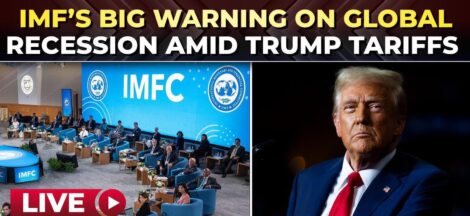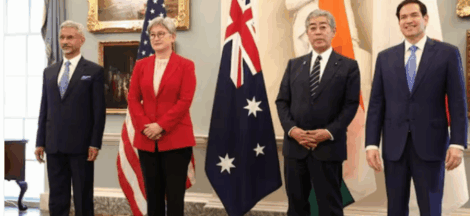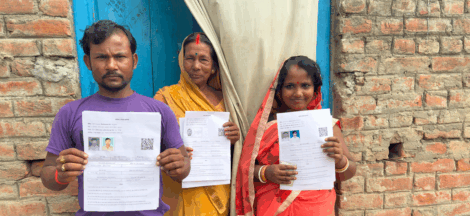By Dr. Gyan Pathak
India would be going downhill for the next two years, if Global Economic Prospect just released by the World Bank is of any indication. GDPs for 2023and 2024 have been revised down to 6.6 per cent and 6.1 per cent respectively, which are below 0.5 and 0.4 per cent compared to its earlier estimates made in June 2022. Obviously, it would push up the poverty level, especially the extreme poverty level in the country, which would remain a major concern, especially at a time of rising joblessness.
South Asia continues to be adversely affected by spillovers from the invasion of Ukraine, rising global interest rates, and weakening growth in key trading partners. Regional growth is estimated to have slowed to 6.1 per cent in 2022 and is projected to slow further to 5.5 per cent in 2023 – below previous projections on global spillovers – before picking up to 5.8 per cent in 2024. It is worth mentioning that the region’s average growth during the first two decades of this century was 6.5 per cent.
Risks to the outlook continue to be tilted to the downside, including further pressure from tightening global financial conditions; higher-than-projected inflation leading to lower real incomes and spending; and the reemergence of financial sector stress. Dwindling international reserves and rising sovereign spreads increase the risk of more economies falling into crisis.
Three countries in the region – Afghanistan, Pakistan, and Sri Lanka –have already witnessing a substantial rise in poverty led by deterioration in economic conditions. Many households are consuming less nutritious food, and rolling electricity blackouts have become common as fuel has been rationed. Widening external current accounts deficits and a combination of limited foreign exchange buffers have encouraged Bangladesh and Pakistan to approach International Monetary Fund (IMF) for help in bolstering foreign exchange reserves and mitigating external financing pressures. In parallel, governments of the region have tightened fiscal policies and, in some cases, imposed import controls and food export bans.
In India, which accounts for three-fourths of the region’s output, growth expanded by 9.7 per cent on an annual basis in the first half of the current fiscal 2022-23, reflecting strong private consumption and fixed investment growth. However, consumer inflation spent most of the last year above the Reserve Bank of India’s upper tolerance limit of 6 per cent, prompting the policy rate to be raised by 2.25 percentage points between May and December.
India’s goods trade deficit has more than doubled since 2019, and was $24 billion in November, with deficits for crude petroleum and petroleum products to the tune of $7.6 billion and other commodities, for example, ores and minerals at $4.2 billion, accounted to the widening of the deficits.
Between June and December, region’s currencies depreciated against the US dollar by an average of 10 per cent above the emerging developing economies (EMDE) average. In conjunction with rising global commodity prices, consumer price inflation has continued to rise, and one-year-ahead inflation expectations remain well above central bank targets.
India used its international reserves at $550 billion in November, which was 16 per cent of its GDP, to curb excess exchange rate volatility helping to limit Rupee depreciation, and its sovereign spread has remained broadly stable at 1.4 per cent in December, similar to average levels in the five years before the pandemic.
In spite of falling growth rate, World Bank finds the region’s GDP growth still robust, which reflect robust growth rate in India, Maldives, and Nepal. However, the deteriorating global environment will weigh on investment in the region.
For India, the outlook says, the slowdown in global economy and rising uncertainty will weigh on export and investment growth. Government has increased infrastructure spending and various business facilitation measures, however, will crowd-in private investment and support expansion of manufacturing capacity.
World Bank has projected to slow India’s growth in 2023-24 to 6.6 per cent before falling back toward its potential rate of just above 6 per cent. However, India is expected to be the fastest growing economy of the seven largest EMDEs.
The outlook has pointed out that countries in the regions are also turning to more restrictive fiscal and monetary policies to address rising domestic and external imbalances and financing pressures at a time when growth in already slowing globally and output gaps are widening in several regional economies. In India, monetary and fiscal tightening over the forecast horizon is expected to be less pronounced than in much of the rest of the region, as adequate policy buffers have provided breathing room to support the ongoing recovery and boost public investment.
However, risks to the outlook remain predominantly to the downside, including those related to the repercussions of the invasion of Ukraine, tightening global financing conditions, legacies from the pandemic, and country-specific vulnerabilities. Potential for crises is also rising.
Addressing rising macro-economic imbalances, which requires fiscal and monetary policy consideration, is challenging when growth is slowing and human deprivation is rising. The complexities of such an environment can amplify the risk of policy mistakes that undermine economic activities, especially in circumstances of high domestic debt and dwindling foreign exchange reserves, the outlook has warned.
Availability of food remains a major concern. Extreme weather events can exacerbate food deprivation, cut the region off from essential supplies, destroy infrastructure, and directly impede agricultural production. Extreme weather can also complicate the implementation of macroeconomic policies. For example, in India, more erratic monsoon rains have translated into more volatile food prices, destabilizing households’ inflation expectations, undermining the ability to forecast inflation, and muddling the formulation of monetary policy, the outlook says. (IPA Service)



